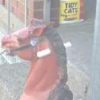183 search results - page 6 / 37 » Detecting Occlusions as an Inverse Problem |
CVPR
2011
IEEE
13 years 5 months ago
2011
IEEE
This paper presents a complete solution to estimating a scene’s 3D geometry and appearance from multiple 2D images by using a statistical inverse ray tracing method. Instead of ...
ICCV
2007
IEEE
15 years 9 days ago
2007
IEEE
While great strides have been made in detecting and localizing specific objects in natural images, the bottom-up segmentation of unknown, generic objects remains a difficult chall...
ACIVS
2009
Springer
14 years 5 months ago
2009
Springer
Abstract. In this paper, we present a fully automatic approach to multiple human detection and tracking in high density crowds in the presence of extreme occlusion. Human detection...
CVPR
2008
IEEE
15 years 11 days ago
2008
IEEE
Tracking people in a dense crowd is a challenging problem for a single camera tracker due to occlusions and extensive motion that make human segmentation difficult. In this paper ...
CVPR
2005
IEEE
15 years 11 days ago
2005
IEEE
This paper presents a new model to overcome the occlusion problems coming from wide baseline multiple camera stereo. Rather than explicitly modeling occlusions in the matching cos...


